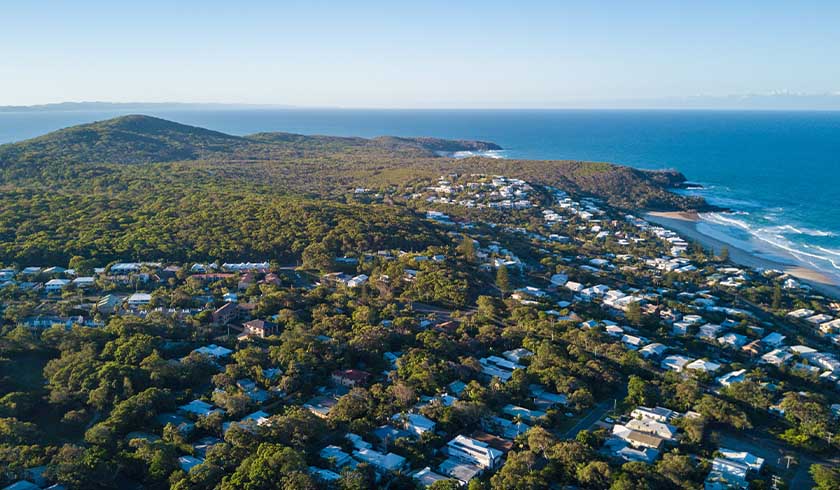Will Aussies continue swiping right for regional living in 2022?
It has been two years since Aussies’ love for regional areas blossomed, as the latter’s appeal of more space, flexible working conditions and affordability lured city dwellers into its arms. But there are now questions about where this love affair is headed – and if it’s going to last.

CoreLogic’s quarterly Regional Market Update showed that the 25 largest non-capital city regions across the country continued to achieve unprecedented increases in value, driven by the strong demand from metropolitan buyers migrating to regional areas.
Over the 12 months to January 2022, the report revealed that 24 regions recorded double-digit annual growth for houses, with 18 regions recording gains of more than 20 per cent.
Byron Shire on the NSW north coast saw the highest median house value of any regional LGA at $1,838,286 (+30.2 per cent). Meanwhile, houses in the Kiama LGA recorded the largest annual increase at 43.9 per cent, taking its median value to $1,633,086.
The median dwelling value across the combined regions surged by a staggering 26.1 per cent in the year to January 2022, outpacing the combined capital city dwelling growth rate of 21.3 per cent seen in the same period.
Along with the strong growth in values, the report also noted the drastic reduction in average selling times for regional properties.
The quickest selling region for houses was the Sunshine Coast in Queensland, where the median time on the market over the 12 months to January 2022 was 15 days.
This was followed by Launceston and north-east in Tasmania, Gold Coast and Toowoomba in Queensland, where the median time on the market was 16 days. At the other end of the spectrum are New England and north-west in NSW, where houses are taking around 53 days to sell.
CoreLogic’s head of research Eliza Owen said that the trend of regional market outstripping capital city growth had maintained momentum for almost two years, and the question of its permanency and likely longevity is now on the rise.
“Timing any shift in the housing market can be very difficult. Generally, a downswing in property values is fairly broad-based across both capital cities and regions and it’s common for the two markets to roughly perform in line with each other,” she stated.
She cited historical data to further explain the phenomenon. “Through the 2010s for example, there appeared to be a lead-lag relationship between capital city and regional housing market performance by three to six months. Through the current cycle, capital city markets hit their peak growth rates in April 2021,” she said.
“[So] if we were to assume the long-term property cycle relationship still holds, regional dwelling market growth rates would have started to slow in late 2021.”
But Ms Owen said that regional markets upended this expectation: “What was unique about the end of last year was that this pattern changed. Coming off the back of eased lockdown conditions across Sydney, Melbourne and the ACT, regional price growth instead accelerated toward the end of the year, while capital city dwelling price growth continued to slow.”
She said this had created an “unusual divergence” between the two markets, where price growth accelerated to 6.3 per cent in regional Australia over the three months to January.
Despite the recent surge in values, Ms Owen expects growth rates in regional Australia to start slowing early this year, noting that key drivers of growth seen in the last two years are now winding down.
The expert cautioned that aside from regional markets now facing the same headwinds as capital markets (e.g. higher interest rates, affordability constraints), they are also vulnerable to the possibility of a return to “normality”, which could return the spotlight on cities.
“Employers may make a return to physical office space a priority in the years ahead, which would necessitate buyers to reconsider housing options closer to a capital city,” she stated. However, she also admitted that the arrival of the Omicron variant might also stall Aussies from returning to city dwellings.
